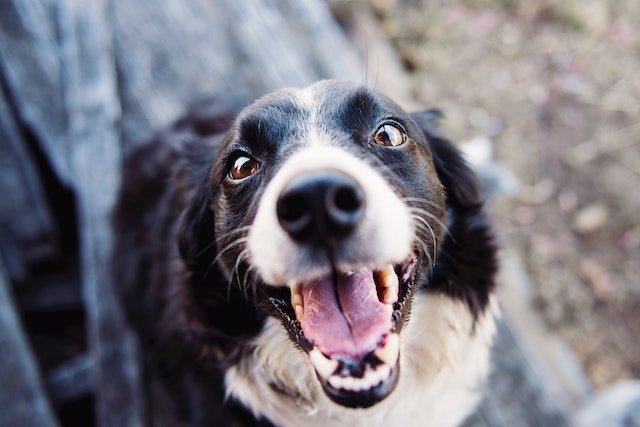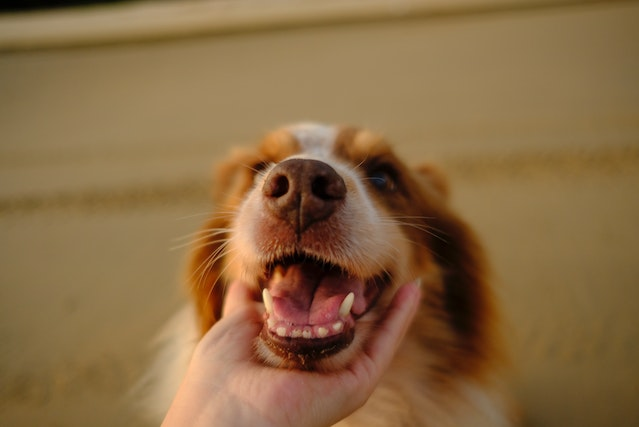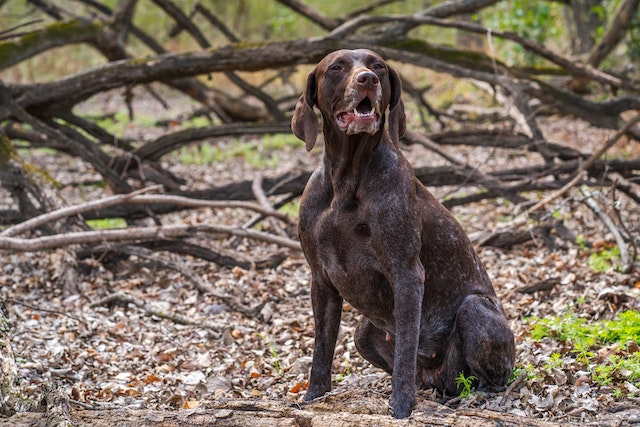
Just like our dentist talks about taking care of our teeth and stopping tartar from building up, it's also essential for our furry buddies.
Having tartar built up on a dog's teeth can weaken their teeth and jawbone. Plus, it can also cause other dental problems.
Do you, as a concerned dog owner, look at your dog's teeth and wonder how to make tartar on dogs less challenging? Well, you aren't the only one, as many new and old dog parents face this issue.
Today we'll discuss several ways you can soften dog tartar. These tricks will stop them from having teeth problems, improve their dental health, and maybe even help them live longer and healthier lives.
So, without further ado, let's find out all you need to know about dog tartar and how you can soften it.
What is Dog Tartar?

Dental tartar, also called calculus, is a tough buildup of calcium that sticks to teeth, usually looking yellow or brown. It's hard to but not impossible to remove dog tartar naturally. This sticky stuff catches food and germs quickly, which can harm teeth and gums.
Having dental tartar can make a dog's breath smell bad and even make its mouth hurt. It's essential to clean it off regularly because just normal brushing might not work.
If tartar isn't taken care of, it can worsen dental problems, causing pain and more trouble for your dog. So, it's essential to keep an eye on your dog's teeth regularly and make sure to take care of any tartar.
Health Issues Due to Tartar Buildup?

If ignored, dental tartar can bring about various health issues in your furry companion, such as -
-
Gum disease
Dental tartar can irritate and inflame gums, potentially causing redness, swelling, and bleeding. If untreated, this can escalate into periodontitis, a more severe gum ailment that harms the bones and tissues around teeth.
-
Tooth Troubles
Destruction of tooth enamel leads to a buildup of tartar. This leads to tooth decay, cavities, and eventual tooth loss. So this presents another concern.
-
Infections
The germs from tartar can lead to gum infections, causing lumps filled with pus. If these gum diseases are not taken care of, these lumps can spread and cause big health problems.
Tartar on teeth is a serious matter that can create various health problems for dogs. If you think your dog has it, it's essential to get them checked and treated by a vet as soon as possible.
10 Ways on How to Soften Dog Tartar

Let's review all the ways how you can soften dog tartar:
-
Brushing and flossing
The best way to take off dental tartar is by daily brushing and flossing. Brushing your dog's teeth twice a week for around 10 minutes is good for dental health. Clean the outside of each tooth and remove any loose, sticky stuff with a toothbrush or dental floss.
At first, let your dog smell and taste the toothpaste so they get used to it. When your dog is okay with it, put some toothpaste on the toothbrush and softly brush their teeth. Pay more attention to the back teeth since that's where tartar usually accumulates.
Remember not to push too hard in your dog's mouth while brushing. This could harm the outer layer of your pet's teeth and their gums.
-
Enzymatic toothpaste
Brushing your dog's teeth daily is the most effective way to remove tartar buildup. It's extremely necessary to maintain dental hygiene. So, it's recommended to use a soft-bristle toothbrush and toothpaste that has enzymes in it.
Enzymatic toothpaste is a helpful option for softening dog tartar. This kind of toothpaste uses special chemicals to break down sticky plaque and tartar on teeth.
It's good at stopping tartar from accumulating and also helps avoid cavities. Enzymatic toothpaste also has ingredients that improve your dog's breath.
To brush your dog's teeth, get a toothbrush, enzymatic dog toothpaste, and some treats. If your dog doesn't like having their teeth brushed, try giving it dental treats after you're done to create a positive association with the process.
-
Dental wipes
These wipes are made to be kind to your dog's gums while still doing an excellent job of removing the hard stuff that leads to teeth issues. Chlorhexidine gluconate is the vital component in these wipes that helps make the dental tartar softer.
These wipes come in various kinds and sizes. Some have enzymes that break down the hard plaque on teeth. These wipes also contain enzymes that help remove any germs in the plaque as well.
-
Chew toys
Dog chew toys are a fantastic way to get rid of tartar on dogs' teeth. These help soften tartar slowly.
When dogs chew on these toys, the surface of the toy rubs against their teeth and helps take off any sticky stuff like plaque or tartar.
Many types of chew toys are out there, so pick one that fits your dog's size and chewing habits.
-
Dental chews
Dog dental chews are chewing treats for teeth and are an excellent method to take off tartar from your pet's teeth.
Various kinds and brands of these treats are available in the market, so ask your vet to recommend one that is the most appropriate for your dog's teeth.
These treats usually taste good to dogs, so your furry friend will like chewing them. Remember to monitor your dog while they chew on these treats, as they might choke if they chew on them too hard.
-
Dental sprays
Dental sprays help get rid of the plaque on your dog's teeth that turns into tartar. They also kill the bad germs in that yucky stuff.
These sprays are easy to use. Just spray them on your dog's teeth daily.
Brushing your dog's teeth every day and using the dental spray often after they eat can help keep their teeth better and stop tartar from building up.
-
Raw bones
Giving your dog raw bones is an ideal way to help with dental tartar. The bone works like a scraping tool to loosen and take off the tartar.
Also, when your dog chews on the bone, it massages their gums and removes any plaque on their teeth.
Just make sure the bone isn't too hard. Moreover, if your dog chews really hard, take the bone away.
-
Oral hygiene chemicals
Another method to get rid of your dog's dental tartar is to use an oral hygiene dental water additive. These products are made to help remove plaque and tartar from your dog's teeth and can work well.
These additives work like a mouth spray when your dog drinks water. They clean your furry friend's gums and teeth. Most of them don't have a smell, so your dog won't notice anything in the water.
Different brands are available in the market, so it's a good idea to do a market survey to find the best one for your dog.
It's wise to ask your vet if using water additives would be good for your dog's teeth and gums. If your vet suggests an oral hygiene additive, read the instructions on the label and pour it into your dog's water bowl.
-
Coconut oil
Using coconut oil is a natural method to make your dog's tartar softer. Put one tablespoon of coconut oil on your dog's toothbrush to use this remedy. Then, gently brush your dog's teeth. Make sure to brush all areas of the teeth – front, back, and sides. You might notice a change in the dog's tartar within a few weeks.
Another method is to put a little bit of coconut oil on your dog's teeth. You can also put it on the gums. Then gently rub it for a minute or two.
-
Dietary changes
You can adjust your dog's diet to reduce dental tartar buildup. Opting for dry kibble over soft or canned food can prevent tartar accumulation. The crunching action of the kibble acts like a natural toothbrush, helping to scrape off plaque and tartar from their teeth.
Additionally, introducing raw, meaty bones into their diet can be beneficial. Gnawing on these bones provides a mechanical scrubbing effect, which aids in removing tartar and keeping their teeth cleaner.
These dietary changes and regular dental care can contribute to better oral hygiene. It also improves the overall health of your furry friend.
Plaque vs Tartar

Dental plaque forms as a sticky layer of bacteria on teeth, while tartar develops when plaque hardens from staying too long.
Dental plaque can be taken care of with regular brushing, but dental tartar requires a dentist or dental hygienist to remove it.
Plaque is often yellow or white, while tartar tends to be brown or black and is generally harder. Also, plaque is softer compared to tartar.
An identifier could be that if you touch your pet's teeth and feel something sticky, that's likely plaque. But if you sense a rough texture on their gums, that's probably tartar.
If you're worried about plaque or tartar on your furry friend's teeth, seeing a vet or dental hygienist is best. They can give your dog a professional cleaning that'll help get rid of any plaque or tartar buildup. You can also opt to remove dog tartar naturally.
When to Get a Vet on Board?

Are you aware dental tartar can gather on your dog's teeth, causing severe issues? If you notice any of these signs, it's a signal to visit the vet for a dental check:
-
Foul breath
-
Yellow or brown buildup on teeth
-
Swollen or red gums
-
Gums that bleed
-
Loss of appetite
-
Losing weight
Make sure you take your dog to the vet for regular dental checkups. Vets can catch any problems with your dog's teeth and gums and suggest the right treatment.
Final Words!

To sum up, taking care of your dog's teeth isn't just about looks – it's about keeping them healthy and happy.
Softening dog tartar involves:
- Simple steps like regular cleaning.
- Choosing the right foods for them.
- Using unique products like wipes, sprays, and toys.
By being proactive and trying out these ideas, you're not just helping your dog's teeth stay in good shape but also assuring that your dog is healthy and well.
Frequently Asked Questions (FAQs)
How often should I brush my dog's teeth?
Brushing your dog's teeth at least twice a day is ideal. However, to remove plaque and prevent tartar buildup, brushing at least three times a week is the least you should aim for.
Can I use human toothpaste for my dog's teeth?
Avoid using human toothpaste on your dog. Human toothpaste might have Xylitol, which is highly poisonous to dogs.
Thankfully, there are many choices available. You can find endless recipes online if you prefer natural options and want to create your own.
Can tartar removal be painful for my dog?
It's normal for your dog to experience discomfort in their teeth and gums right after the procedure, and the decision about using pain relief is based on each pet's situation.
In some cases, antibiotics might also be prescribed to prevent inflammation caused by the treatment.



















